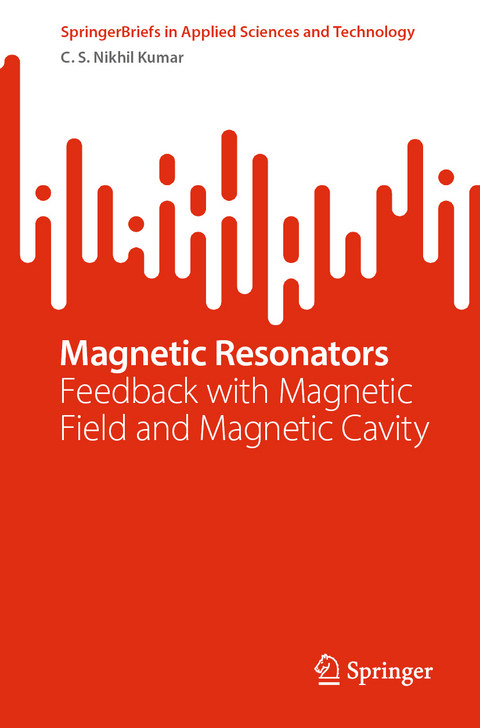
Magnetic Resonators
Springer Verlag, Singapore
978-981-19-6175-5 (ISBN)
Dr. Nikhil Kumar C S received his B.Tech in Electronics and Communication Engineering from the IES College of Engineering, University of Calicut, Kerala in 2007 and was awarded his Master of Science by Research in Electrical Engineering, IIT Madras in 2014 with a thesis titled Analytical models for magnonic devices and with his Doctor of Philosophy in Electrical Engineering, IIT Madras in 2020 with a thesis titled Magnonic Devices with Feedback Stabilization. His research interests are in the areas of Magnonic Devices, Spin Torque Devices, Magnon Spintronic Devices.
1 - Introduction
1 1.1 Magnonic devices
1 1.1.1 Unconventional Computing
3 1.1.2 Hybrid magnonics and Magnon spintronics
4 1.1.3 STNO configurations
6 1.1.4 STNO device principle
8 1.1.5 Mutual synchronization of STNOs
8 1.2 Landau - Lifshitz - Gilbert - Slonczewski equation
94 1.2.1 Numerical Methods
10 1.2.2 Finite Difference and Finite Element method
14 Summary
2- Analytical model for a magnonic ring resonator
2.1 Geometry and analysis
2.2 Dispersion relation of curved magnonic waveguide
2.3 Validations
2.4 Modes in a magnonic ring
3 - Magnonic spectra in 2D antidot magnonic crystals with ring
3.1 Plane wave method
3.1.1 Convergence
3.2 Eigenmodes
3.3 Micromagnetic simulations
3.3.1 Magnonic spectra
3.3.2 Antidot magnonic crystal waveguide with linear defect
4 – Magnetic resonators with magnetic field feedback
4. 1 Introduction
4. 1 Problem statement
4. 2 Micromagnetic simulation without magnetic field feedback
4.3 Free layer model
4.4 Free layer Hysteresis loops
4.5 Ferromagnetic resonance frequency versus applied field
4.6 FMR versus applied field for different in plane and out of plane anisotropy FMR versus applied field for different out of plane anisotropy
4.7 Current dependence on resonance frequency
4.8 Spintronic oscillators with magnetic field feedback
4.9 Spin wave dynamics with magnetic field feedback
4.10 Spin wave dynamics at 300 K
4.11 Linewidth (Without magnetic field feedback)
4.4 Linewidth (with magnetic field feedback)
4.5 Spin wave spectra with different delay
5 – Magnetic resonators magnetic cavity feedback
5.1- I. Introduction
5.1.2. Micromagnetic Simulations
5.1.3 Method of Calculation
5.1.4 Band structure of antidot MC
5.1.5 Spin wave injection on Py film using an array of nano contacts
5.1.6 Fabry Perot model
5.1.7 Quality Factor Calculation
| Erscheinungsdatum | 31.10.2022 |
|---|---|
| Reihe/Serie | SpringerBriefs in Applied Sciences and Technology |
| Zusatzinfo | 86 Illustrations, color; 2 Illustrations, black and white; XV, 92 p. 88 illus., 86 illus. in color. |
| Verlagsort | Singapore |
| Sprache | englisch |
| Maße | 155 x 235 mm |
| Themenwelt | Naturwissenschaften ► Chemie ► Analytische Chemie |
| Naturwissenschaften ► Physik / Astronomie ► Angewandte Physik | |
| Technik ► Elektrotechnik / Energietechnik | |
| Schlagworte | Fabry Perot model • Finite Element Method (FEM) • Magnonic crystals • Magnonic devices • Magnonic ring resonator • Magnonic waveguide • Magnon Spintronics • micromagnetic simulations • Spin-Torque Nano Oscillators(STNOs) • Spintronic oscillators |
| ISBN-10 | 981-19-6175-1 / 9811961751 |
| ISBN-13 | 978-981-19-6175-5 / 9789811961755 |
| Zustand | Neuware |
| Haben Sie eine Frage zum Produkt? |
aus dem Bereich


